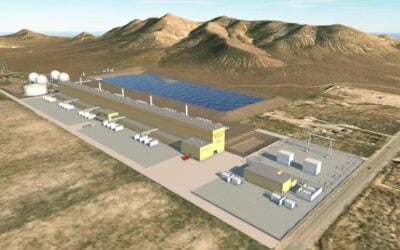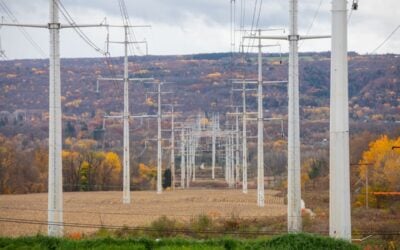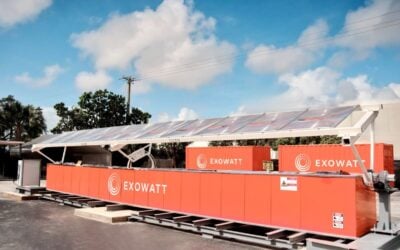The US-based solar division of Japan’s Kyocera and energy service start-up Stem have become the latest partnership to offer integrated solar-plus-storage to commercial customers in the US, beginning with sales in three states including California.
Stem announced the news last week, claiming that the system can dramatically reduce peak demand charges. Commercial energy users’ bills are calculated from a window of time, usually around 15 minutes long, that exemplifies their most intensive energy usage on a monthly basis.
Energy storage can be used to ‘shift’ these charges. SolarCity, the largest US residential solar installer and leasing company, already offers commercial storage products across the US for these reasons. Stem’s behind-the-meter system utilises predictive analytics to allow for an automatic response to spikes in electricity demand, reducing energy costs by drawing on the power stored. Stem claims this can cut bills by 20%.
The systems can also be aggregated to provide demand response, with the capabilities of the units for mitigating variable renewable generation sold to utilities. The company claims its system can predict energy usage up to 30 days in advance, thus charging the battery with cheaper grid electricity when demand charges are at their lowest.
Try Premium for just $1
- Full premium access for the first month at only $1
- Converts to an annual rate after 30 days unless cancelled
- Cancel anytime during the trial period
Premium Benefits
- Expert industry analysis and interviews
- Digital access to PV Tech Power journal
- Exclusive event discounts
Or get the full Premium subscription right away
Or continue reading this article for free
Stem claims its system can predict likely energy use patterns up to 30 days in advance. Image: Stem.
Kyocera will provide the product with its solar modules. Stem will initially launch it in California, Hawaii and New York, three of the US regions thought to lead on energy storage deployment so far. California has a mandate to install 1.3GW of grid-level storage by 2020, while Hawaii has a high level of penetration of PV on its various island grids, while New York’s storage policy has been strongly flavoured by a plan from utility company ConEdison to take on 100MW of load reduction measures, thought to include grid storage.
Recent blogs on the PV Tech Storage site have included an analysis of the Hawaii RFP by analyst Dean Frankel of Lux Research and a piece on the creation of a market for energy storage in New York by Bill Radvak of American Vanadium, a company which has installed a large-scale flow battery system to a pilot project in Manhattan, New York City.
Stem’s chief executive officer John Carrington talked up the compatibility of storage and solar.
“Intelligent energy storage is a natural fit for PV and our solution integrates seamlessly with Kyocera’s solar technology to bring new value to the commercial market,” he said.
Kyocera Solar will provide modules to customers of the combined product. Image: Kyocera.
Meanwhile, Steve Hill, president of Kyocera Solar claimed the partnership would confer strong competitive advantages in the marketplace.
“Simply put, we believe our comprehensive solution offers a greater return, in a shorter period, and with a longer total lifespan, than any competing renewable energy system,” he said.
In related news, Kyocera has begun a demonstration project aimed at providing demand response to maintain stability of electricity supplies in its home country of Japan. Kyocera will manage, test, design and be responsible for the operation of automated demand response (ADR) systems, working in conjunction with IBM Japan, which will be in charge of the project’s data and Tokyu Community, a Japanese building management company, which will verify the project and look into installing the ADR systems at a number of locations.
Kyocera panels at a solar farm in Matsushima, Japan. Image: Andy Colthorpe.





